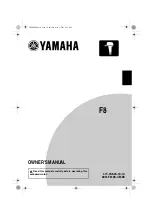
RDG603A81
– Issue 2
Page 88 of 93
8.2. Exposure controls
Protective equipment
Appropriate engineering
Provide adequate general and local exhaust ventilation. Observe any occupational exposure
controls
limits for the product or ingredients.
Eye/face protection
Eyewear complying with an approved standard should be worn if a risk assessment indicates
eye contact is possible. The following protection should be worn: Chemical splash goggles or
face shield.
Hand protection
The most suitable glove should be chosen in consultation with the glove
supplier/manufacturer, who can provide information about the breakthrough time of the glove
material.
Other skin and body
Use barrier creams to prevent skin contact.
Protection
Hygiene measures
Use engineering controls to reduce air contamination to permissible exposure level. Wash
promptly with soap and water if skin becomes contaminated.
Respiratory protection
No specific recommendations. Respiratory protection must be used if the airborne
contamination exceeds the recommended occupational exposure limit.
Thermal hazards
Not anticipated under normal conditions of use. The product is combustible if heated
excessively and an ignition source is applied.
Environmental exposure
Do not allow product to contaminate land.
Controls
SECTION 9: Physical and Chemical Properties
9.1. Information on basic physical and chemical properties
Appearance
Liquid.
Colour
Pale Amber
Odour
Characteristic. Oil-like.
Odour threshold
Not known.
pH
Not applicable.
Melting point
-39°C Pour point
Initial boiling point and range
>320°C @ 101.3 kPa
Flash point
208°C PMCC (Pensky-Martens closed cup).
Evaporation rate
Not relevant.
Upper/lower flammability or
Not known.
explosive limits
Other flammability
Product is not flammable but on excessive heating may become combustible.
Vapour pressure
<0.1 kPa @ 20°C
Vapour density
Not determined.
Relative density
0.870 @ 15.6°C
Solubility(ies)
Insoluble in water. Soluble in the following materials: Organic solvents.
Partition coefficient
Not determined. log Kow: > 7 The above figure is typical of mineral oil.
Auto-ignition temperature
No specific test data are available.





































